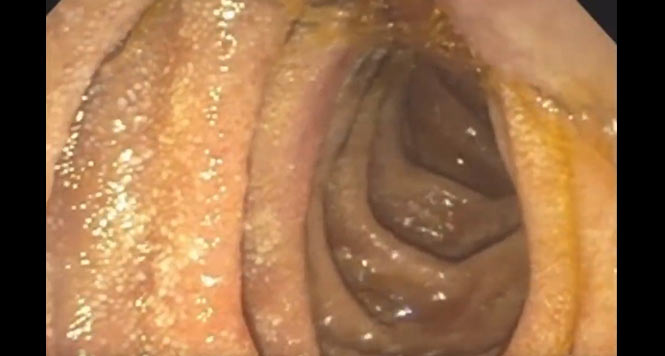Primary EUS Choledochoduodenostomy Is Safe and Efficacious in Malignant Biliary Obstruction
Rajesh N. Keswani, MD, MS, reviewing Teoh AYB, et al. Gastroenterology 2023 Apr 28.
Palliation of malignant biliary obstruction is required to facilitate oncologic therapy and relief of symptoms. Although this is almost always performed with ERCP, biliary cannulation can be challenging in these cases and, even if successful, the procedure can be complicated by pancreatitis. For this reason, there is increasing interest in primary EUS-guided choledochoduodenostomy (ECDS).
In this study, Teoh et al evaluated the role of ECDS (using 6- and 8-mm lumen-apposing metal stents) versus ERCP with covered metallic stents in patients with unresectable malignant distal biliary obstruction. They enrolled 155 patients in this multicenter study of ECDS versus ERCP procedures performed by EUS and ERCP experts. ERCP failure was defined as failure to cannulate the bile duct after at least 30 minutes, with the option to perform precut sphincterotomy after 30 minutes.
The ECDS group had a significantly higher technical success rate than the ERCP group (96.2% vs 76.3%; P<.001). Among 3 patients who experienced ECDS technical failures, two failures were caused by stent misdeployment, and two patients required percutaneous drainage. In the ERCP group, 17 technical failures occurred: 10 were failed cannulations, and 7 were due to duodenal obstruction, which prevented the endoscopist from reaching the papilla. However, once a stent was successfully placed, the one-year stent patency was similar in both groups (ECDS, 91.1% vs ERCP, 88.1%), though the cause of stent obstruction varied between groups (tumor ingrowth was more common in the ERCP group).

COMMENTThis is an extremely important study and should change practice at many institutions. The authors show that in this unresectable malignant biliary obstruction population, ECDS — performed by expert endosonographers — is at least as good as ERCP. Furthermore, as ECDS is not dependent on having a patent duodenum and may be technically easier than cannulation of a severe distal biliary obstruction, it has the potential to be used by experts as first-line therapy. At a minimum, it should be a backup option when difficult ERCP is encountered.
Note to readers: At the time we reviewed this paper, its publisher noted that it was not in final form and that subsequent changes might be made.
CITATION(S)
Teoh AYB, Napolean B, Kunda R, et al. EUS-guided choledocho-duodenostomy using lumen apposing stent versus ERCP with covered metallic stents in patients with unresectable malignant distal biliary obstruction. A multi-center randomized controlled trial. (DRA-MBO trial). Gastroenterology 2023 Apr 28. (Epub ahead of print) (https://doi.org/10.1053/j.gastro.2023.04.016)


